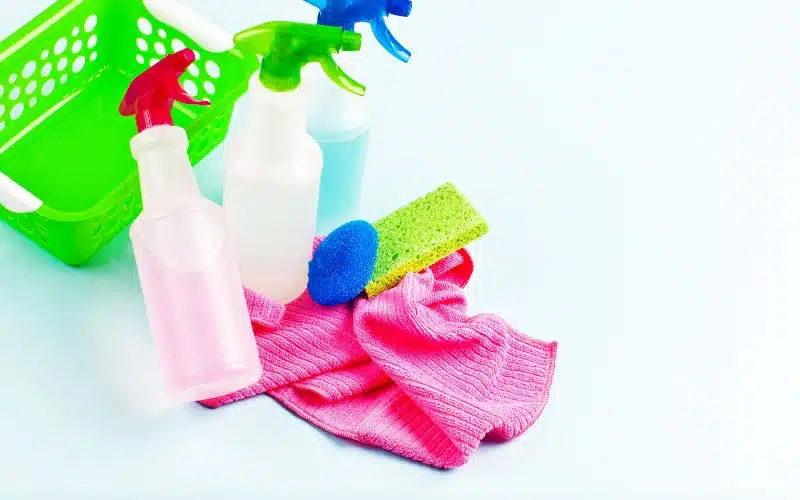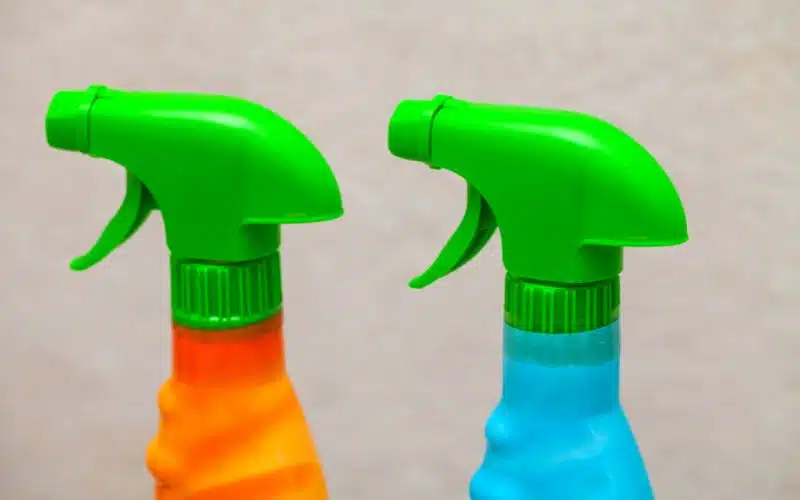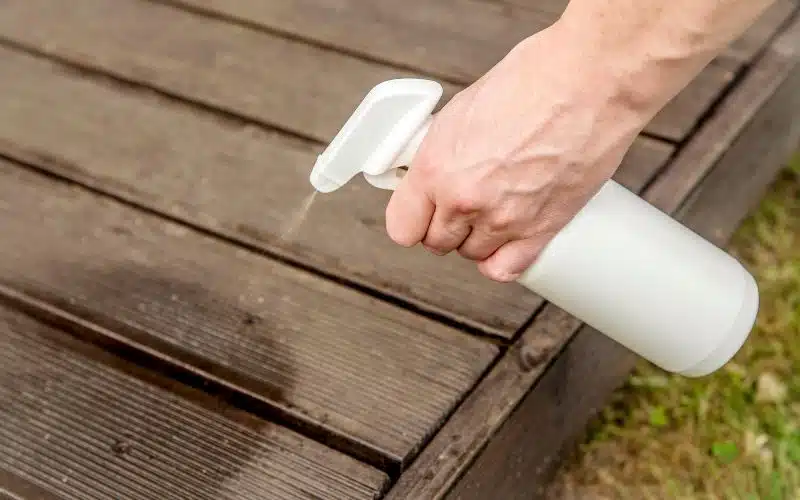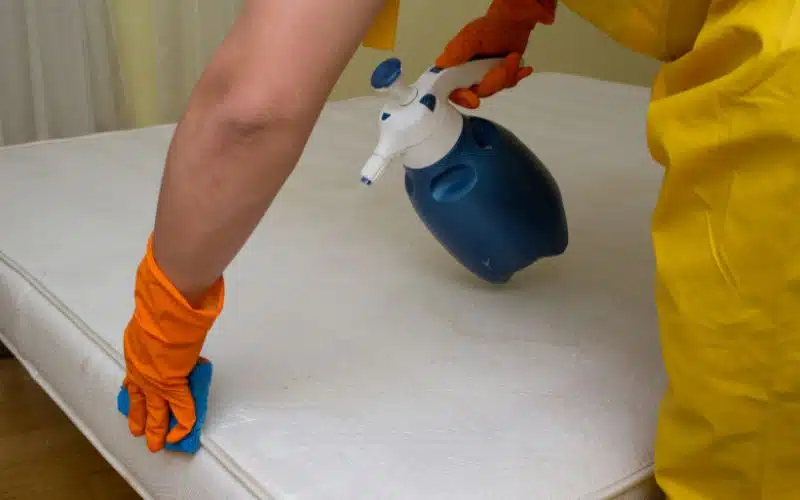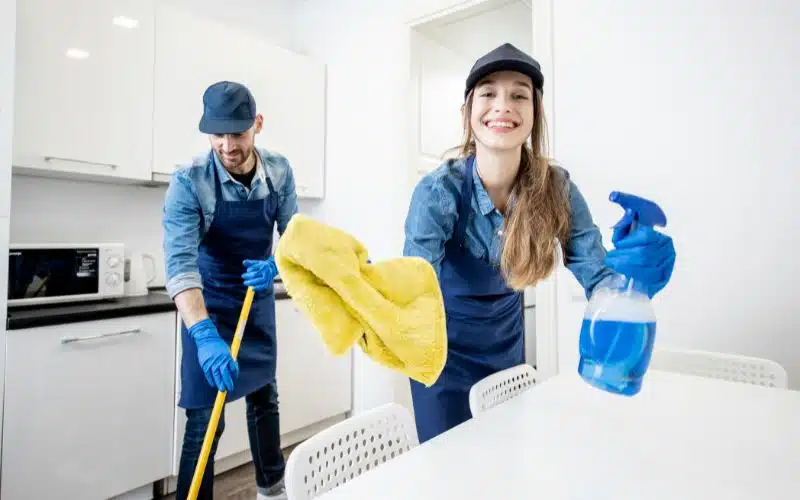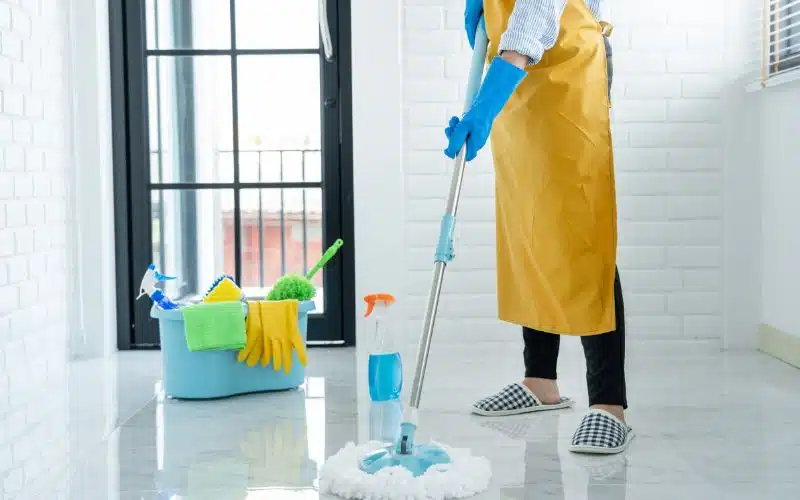Fabric softener, also known as fabric conditioner, is traditionally used in the laundry department at home.
They also add a sweet fragrance to the softening effect. The fabric softener is a clear example of a product serving multiple purposes at home.
However, what is the range and limit of the fabric softener? Can you mop with fabric softener?
Yes, you can mop with fabric softener. Mix the liquid with warm water to use on floor types that are sensitive to chemicals and frequent use. Tile floors, wood floors, and carpets are some of the floor types that are suitable for this softener.
How Do You Use Fabric Softener to Clean Your House?
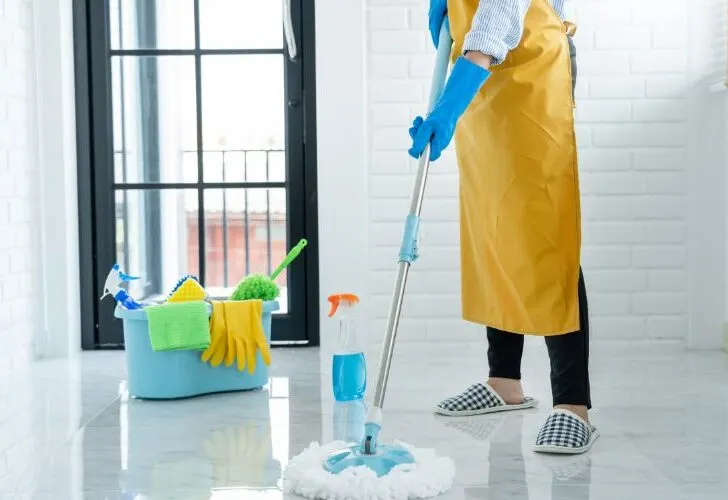
Interestingly, fabric softener is helpful in various aspects of home cleaning. Not all of these aspects involve laundry.
The chemical composition of this product makes it ideal for different situations. It also leaves you with a lovely fragrance, an added advantage.
It is necessary to dilute the fabric softener for most cleaning activities to reduce its chemical effect. In a few cases, you might need to add other ingredients, like baking soda.
Here are some of the areas where fabric softeners come in handy.
#1. Kitchen Utensils
Besides laundry, the kitchen is another area where the fabric softener becomes useful. Scorched pans and pots are often hard to clean.
However, if you have this laundry product at home, you have an easy hack to help you deal with it.
Scrubbing can reduce the quality of the pots and add particles to your cooking. However, dissolving fabric softeners in warm water creates a valuable solution for this mixture.
Soak the pan or pot with the mixture for at least 30 minutes. Wash thoroughly and rinse. It is an excellent way to keep the pan clean and shining.
#2. Use in Toilet
Fabric softeners can substitute many products at home. Another place at home where it comes in handy is in the toilet.
Fabric softener has a pleasant fragrance that spreads across the room when in use. Its cleaning capabilities are also widely known. You can use both features to your advantage in the toilet.
In this case, pour a measure of your favorite fabric softener into the tank of the toilet system. It is best to run it when the tank is full of water.
Each flush helps to clean the toilet system efficiently. It also leaves a nice smell across the restroom. Frequent use also shows that this mixture does not damage the toilet system.
#3. Carpet Floor
Carpet floors can also use the strengthening effect of fabric softener. Fabric softeners can toughen the fibers that make up the carpets.
Frequent use seems to affect carpet floors more than any floors. Once again, it is good to mix the conditioner with warm water.
Spray the mixture on the floor. Next is to allow the diluted fabric softener to sit on the carpet for some minutes for full effect.
Clean off using a steam mop or carpet cleaner. It leaves a clean and fluffed fiber with a sweet aroma.
#4. Pet Hair Removal
In its small numbers, cat hair tends to stick to carpets, rugs, and sofas when they move around. Other hairy pets at home also have this issue.
The problem is that they seem to stick to the surface and remain after a vacuum. You can use fabric softener to get rid of this problem.
Spray a diluted version of the solution on the surfaces and allow it to stay for some minutes. Use the vacuum cleaner to gather the hair.
#5. Refresh the Curtains
Before the curtains are due for professional cleaning, a fabric softener can help make things easier.
Curtains of different kinds and nature tend to absorb different types of smell from home activities. This smell can linger on after the source is gone.
Mix the fabric softener with a little bit of baking soda and water. Pour into a bottle and spray gently on the curtain.
The curtain absorbs the smell making it fresher. It also improves the air in the atmosphere.
#6. Removing Hard Water
Hard water often leaves stubborn stains on shower walls and doors. When mixed with soap, hard water does not make foams.
It leaves chemical stains on the bathroom walls with a characteristic slimy feel. Fabric softener is one of the laundry products that can help clean this product.
As usual, mix the conditioner with warm water in equal volume and spray it onto the walls. Use a sponge to wash off the surface. It should remove the greasy stains.
Is Fabric Softener Good for Wood Floors?
Fabric softener is an excellent substitute for central floor cleaners at home. It is one of the many different chores where you can use this cleaner.
There are few substitutes for wood floor cleaners due to material composition and chemical reactivity.
Wood floors react to chemical content. Fortunately, fabric softeners do not have any harsh chemicals that can affect the wood floors.
Fabric softener does more than clean the floor; it also leaves it shining. Mix it with water, preferably warm, before use.
Make sure to use a soft mop when cleaning. It ensures the wood floor suffers no scratch while it stays new.
Can I use Fabric Softener on Tile Floors?
Fabric softeners can add shine to your tile floors, making them smoother. It is possible to have some reservations due to its chemical composition. Many fear that it makes the tile wear off faster than expected.
However, the diluted use of the fabric softener helps reduce those concerns. This solution gives you the perfect combination for tile floors.
Dip in a cloth or mop and squeeze lightly to make it damp. Wash with the wet mop and clean with a clean mop
Can I use a Fabric Softener on Laminate Flooring?
Laminate flooring has a unique composition of microfibers. It reduces the lustrous look of the flooring faster.
Admittedly, you have many options when cleaning laminate flooring, but fabric softener is not an ideal option.
Laminate flooring is delicate to handle. One prominent feature is the lustrous look that shines when it is new. However, repeated staining and cleaning leave the floor with a dull look.
However, one major problem with laminate flooring is that it gets dull and cloudy with repeated cleaning.
Sometimes it is better to clean the floor with just a moist mop if there is no appropriate cleaning aid. Fabric softener increases the cloudy look of the floor over time.
The dull or cloudy appearance of fabric softeners comes from natural wear and tear.
However, some cleaners can help make your laminate flooring look good for as long as possible.
Here is a list based on categories
#1. Natural Cleaner
You can easily make a solution using natural products at home to clean your flooring.
A mixture of white vinegar, rubbing alcohol, and water makes the perfect mixture for this job. Some add drops of essential oil to the mix to help with the strong smell.
It is essential only to use this solution once a month. It would help if you also used it sparingly, sprayed bits on the floor, and cleaned it with a wet mop. Then use a dry mop to clean off the surface to retain that lustrous look.
#2. Low Heat Cleaning
You can improve the surface using low heat when using only a mop to clean the laminate floor.
This cleaning method is steam mopping. But be careful to only use the lowest heat setting for moping.
Laminate floor materials are not too resistant to heat. High heat removes the protective coat of the laminate fiber. Low heat makes it shine.
These are two popular standard solutions when cleaning a laminate floor. Remember that fabric softener is not the best in this case.
Can You Clean Leather with Fabric Softener?
There are two main categories of leather materials in any household; leather clothing and sofas. The two can enjoy the benefits of fabric softener in two different ways.
For leather clothes, fabric softener does precisely what it is supposed to do. Washing can stiffen up your leather wear. Fabric softener comes in handy.
One can use fabric softener when cleaning leather sofas and other home gadgets with leather covering.
However, the steps involved are quite different in this situation. The best way is to use a dilute version of the conditioner.
Here are the steps for cleaning leather coverings.
- Pour a small amount of fabric softener into a bowl
- Top it up with boiling water to make it diluted
- Soak a sponge in the mixture and squeeze till it isn’t too wet
- Use a near-dry sponge or foam to clean the leather surface.
These steps are best for minor leather stains. When the stain is too thick and noticeable, it is best to use vinegar as the cleaning agent.
A fabric softener is only best for general cleaning to help keep the fresh look of the leather.
Make sure to use it at most once a month, and dilute it. A concentrated fabric softener can quickly wear off the leather surface.
Tips for Mopping with Fabric Softener
When using fabric softener for mopping, there are things to consider about the effect of fabric softener in the short and long term.
One major tip is always to use the conditioner in its diluted form. Applying to surfaces with diluting can damage the integrity of the surface.
While there are suitable surfaces and materials for fabric softeners, there are some instances where you should use fabric softeners.
Here is a table showing the appropriate and inappropriate materials for fabric softeners.
| S/N | Appropriate Use of Fabric Softener | Inappropriate Use of Fabric Softener |
|---|---|---|
| 1 | Laundry | Towels |
| 2 | Toilet Flush | Microfiber |
| 3 | Curtains | Sport wears |
| 4 | Wood Floors | Laminate Floor |
| 5 | Removing Hard Water | White Shirts |
Final Thoughts
Fabric softeners can serve many purposes at home. Other than laundry, other areas where this conditioner provides an excellent solution include toilets, bathrooms, and floors.
The cleaning effect makes it a valuable solution to have at home. The lasting fragrance gives you more reason to have read for any cleaning situation.
